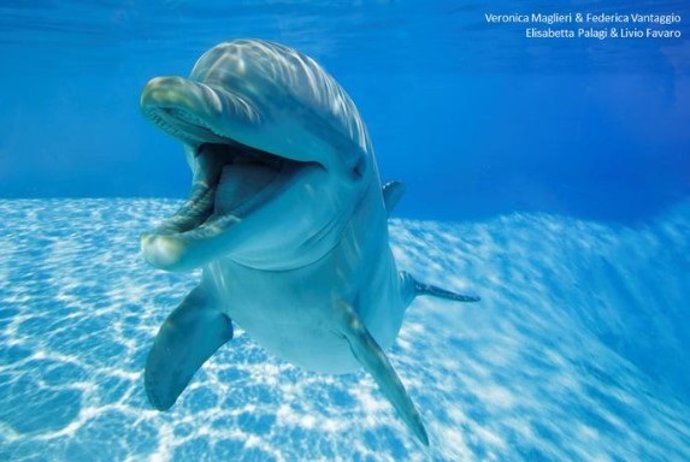Open mouth smile – ZOOMARINE, ITALY
Oct. 2 () –
Bottlenose dolphins (Tursiops truncatus) use the “open mouth” facial expression (analogous to a smile) to communicate during social play, reveals a study published in Cell Press.
These animals are extremely playful, but little is known about how they communicate during play. According to new research, they almost always use facial expressions when they are in the visual field of their playmate, and when their playmates perceive a “smile,” They responded the same way 33% of the time.
“We have discovered the presence of a distinctive facial expression, the open mouth, in bottlenose dolphins, and we show that dolphins are also capable of imitating the facial expressions of others,” says lead author and evolutionary biologist Elisabetta Palagi, from the University of Pisa.
“Open-mouth signals and rapid mimicry appear repeatedly throughout the mammalian family tree, suggesting that visual communication has played a crucial role in shaping complex social interactions, not just in dolphins.” but in many species over time“he added.
Dolphin play can include acrobatics, surfing, playing with objects, chasing and fighting, and it is important that these activities are not misinterpreted as aggression. Other mammals use facial expressions to communicate joy, but until now it has not been explored whether marine mammals also use facial expressions to signal that it is time to play.
“The open-mouth gesture probably evolved from the biting action, breaking down the biting sequence to leave only the ‘intention to bite’ without contact” says Palagi. “The relaxed open mouth, seen in social carnivores, the play faces of monkeys and even human laughter, is a universal signal of joy, helping animals (and us) to signal fun and avoid conflicts.
To investigate whether dolphins visually communicate their joy, researchers recorded captive bottlenose dolphins playing in pairs and while playing freely with their human trainers.
They showed that dolphins frequently use the open-mouth expression when playing with other dolphins, but they don’t seem to use it when playing with humans or when playing alone. While only one open-mouth event was recorded during solo play, the researchers recorded a total of 1,288 open-mouth events during social play sessions, and 92% of these events occurred during inter-dolphin play sessions. The dolphins were also more likely to assume the open-mouth expression when their faces were in their playmate’s field of view (89% of the recorded open-mouth expressions were emitted in this context) and when they perceived this “smile.” “, the playing partner smiled back 33% of the time.
“Some may argue that dolphins simply imitate the open mouth expressions of others by chance, given that they are often involved in the same activity or context, but this does not explain why the probability of imitating the open mouth of another dolphin in a second is 13 times greater when the receiver actually sees the original expression,” says Palagi. “This rate of mimicry in dolphins is consistent with what has been observed in certain carnivores, like meerkats and sun bears.
The researchers did not record the dolphins’ acoustic signals during play, and say future studies should investigate the possible role of vocalizations and tactile cues during playful interactions.
“Future research should delve into eye tracking to explore how dolphins see their world.” and use acoustic signals in their multimodal communication during the game“says corresponding author and zoologist Livio Favaro.
“Dolphins have developed one of the most complex vocal systems in the animal world, but sound can also expose them to predators or spies. When dolphins play together, a combination of whistles and visual cues helps them cooperate and achieve goals, a strategy particularly useful during social play, when they are less alert to predators,” he concluded.















![[Img #74664]](https://thelatestnews.world/wp-content/uploads/2024/12/James-Watson-The-controversial-genius-behind-the-double-helix-300x200.jpg)
Add Comment